Lipidomics for Determining Giant Panda Responses in Serum and Feces Following Exposure to Different Amount of Bamboo Shoot Consumption: A First Step towards Lipidomic Atlas of Bamboo, Giant Panda Serum and Feces by Means of GC-MS and UHPLC-HRMS/MS
Abstract
:1. Introduction
2. Results
2.1. A Lipidomic Atlas of Bamboo
2.2. Normal and High Bamboo Shoot Consumption Affect the Lipidomic Features of Giant Pandas
2.3. Microbial Community and Their Association with Lipidomic Profiles
3. Discussion
4. Materials and Methods
4.1. Bamboo Samples
4.2. Giant Pandas and Their Diets
4.3. Feces and Serum Sample Collection
4.4. GC-MS Analysis
4.5. UHPLC-HRMS/MS Analysis
4.6. Molecules Identification and Quantification
4.7. DNA Extraction and Amplicon Sequencing
4.8. Statistical Analysis
5. Conclusions
Supplementary Materials
Author Contributions
Funding
Institutional Review Board Statement
Informed Consent Statement
Data Availability Statement
Conflicts of Interest
References
- Teare, R.; Dealtry, R. Building and Sustaining a Learning Organization. Learn. Organ. 1998, 5, 47–60. [Google Scholar] [CrossRef]
- ISIS. Physiological Reference Values; Teare, J.A., Ed.; International Species Information System: Apple Valley, CA, USA, 2002. [Google Scholar]
- Jin, L.; Huang, Y.; Yang, S.; Wu, D.; Li, C.; Deng, W.; Zhao, K.; He, Y.; Li, B.; Zhang, G.; et al. Diet, Habitat Environment and Lifestyle Conversion Affect the Gut Microbiomes of Giant Pandas. Sci. Total Environ. 2021, 770, 145316. [Google Scholar] [CrossRef] [PubMed]
- Wang, H.; Zhong, H.; Hou, R.; Ayala, J.; Liu, G.; Yuan, S.; Yan, Z.; Zhang, W.; Liu, Y.; Cai, K.; et al. A Diet Diverse in Bamboo Parts Is Important for Giant Panda (Ailuropoda melanoleuca) Metabolism and Health. Sci. Rep. 2017, 7, 3377. [Google Scholar] [CrossRef]
- Fu, M.; Pan, H.; Song, X.; Dai, Q.; Qi, D.; Ran, J.; Hou, R.; Yang, X.; Gu, X.; Yang, B.; et al. Back-and-Forth Shifts in Habitat Selection by Giant Pandas over the Past Two Decades in the Daxiangling Mountains, Southwestern China. J. Nat. Conserv. 2022, 66, 126129. [Google Scholar] [CrossRef]
- Williams, C.L.; Willard, S.; Kouba, A.; Sparks, D.; Holmes, W.; Falcone, J.; Williams, C.H.; Brown, A. Dietary Shifts Affect the Gastrointestinal Microflora of the Giant Panda (Ailuropoda melanoleuca). J. Anim. Physiol. Anim. Nutr. 2013, 97, 577–585. [Google Scholar] [CrossRef] [PubMed]
- Wu, Q.; Wang, X.; Ding, Y.; Hu, Y.; Nie, Y.; Wei, W.; Ma, S.; Yan, L.; Zhu, L.; Wei, F. Seasonal Variation in Nutrient Utilization Shapes Gut Microbiome Structure and Function in Wild Giant Pandas. Proc. R. Soc. B Biol. Sci. 2017, 284, 20170955. [Google Scholar] [CrossRef]
- Wang, L.; Huang, G.; Hou, R.; Qi, D.; Wu, Q.; Nie, Y.; Zuo, Z.; Ma, R.; Zhou, W.; Ma, Y.; et al. Multi-Omics Reveals the Positive Leverage of Plant Secondary Metabolites on the Gut Microbiota in a Non-Model Mammal. Microbiome 2021, 9, 192. [Google Scholar] [CrossRef]
- Huang, W.; Xie, P.; Cai, Z. Lipid Metabolism Disorders Contribute to Hepatotoxicity of Triclosan in Mice. J. Hazard. Mater. 2020, 384, 121310. [Google Scholar] [CrossRef]
- Kindt, A.; Liebisch, G.; Clavel, T.; Haller, D.; Hörmannsperger, G.; Yoon, H.; Kolmeder, D.; Sigruener, A.; Krautbauer, S.; Seeliger, C.; et al. The Gut Microbiota Promotes Hepatic Fatty Acid Desaturation and Elongation in Mice. Nat. Commun. 2018, 9, 3760. [Google Scholar] [CrossRef]
- Lisuzzo, A.; Bonelli, F.; Sgorbini, M.; Nocera, I.; Cento, G.; Mazzotta, E.; Turini, L.; Martini, M.; Salari, F.; Morgante, M.; et al. Differences of the Plasma Total Lipid Fraction from Pre-Foaling to Post-Foaling Period in Donkeys. Animals 2022, 12, 304. [Google Scholar] [CrossRef]
- Patterson, R.E.; Kirpich, A.S.; Koelmel, J.P.; Kalavalapalli, S.; Morse, A.M.; Cusi, K.; Sunny, N.E.; McIntyre, L.M.; Garrett, T.J.; Yost, R.A. Improved Experimental Data Processing for UHPLC–HRMS/MS Lipidomics Applied to Nonalcoholic Fatty Liver Disease. Metabolomics 2017, 13, 142. [Google Scholar] [CrossRef]
- Yen, S.; McDonald, J.A.K.; Schroeter, K.; Oliphant, K.; Sokolenko, S.; Blondeel, E.J.M.; Allen-Vercoe, E.; Aucoin, M.G. Metabolomic Analysis of Human Fecal Microbiota: A Comparison of Feces-Derived Communities and Defined Mixed Communities. J. Proteome. Res. 2015, 14, 1472–1482. [Google Scholar] [CrossRef] [PubMed]
- Perez, P.F.; de Antoni, G.L.; Añon, M.C. Formate Production by Streptococcus Thermophilus Cultures. J. Dairy Sci. 1991, 74, 2850–2854. [Google Scholar] [CrossRef]
- Ohshima, C.; Takahashi, H.; Insang, S.; Phraephaisarn, C.; Techaruvichit, P.; Khumthong, R.; Haraguchi, H.; Lopetcharat, K.; Keeratipibul, S. Next-Generation Sequencing Reveals Predominant Bacterial Communities during Fermentation of Thai Fish Sauce in Large Manufacturing Plants. LWT 2019, 114, 108375. [Google Scholar] [CrossRef]
- Wang, M.; Li, M.; Chapkin, R.S.; Ivanov, I.; Donovan, S.M. Fecal Microbiome and Metabolites Differ between Breast and Formula-fed Human Infants. FASEB J. 2013, 27. [Google Scholar] [CrossRef]
- Ren, C.; Zhou, Q.; Guan, W.; Lin, X.; Wang, Y.; Song, H.; Zhang, Y. Immune Response of Piglets Receiving Mixture of Formic and Propionic Acid Alone or with Either Capric Acid or Bacillus Licheniformis after Escherichia coli Challenge. Biomed. Res. Int. 2019, 2019, 6416187. [Google Scholar] [CrossRef]
- Wilson, A.E.; Sparks, D.L.; Knott, K.K.; Willard, S.; Brown, A. Simultaneous Choice Bioassays Accompanied by Physiological Changes Identify Civetone and Decanoic Acid as Pheromone Candidates for Giant Pandas. Zoo Biol. 2020, 39, 176–185. [Google Scholar] [CrossRef]
- Ji, J.; Zhang, S.; Tang, L.; Zhang, M.; Yuan, M.; Wang, P.; Gao, X. Integrative Analysis of Fecal Metabolome and Gut Microbiota in High-Fat Diet-Induced Hyperlipidemic Rats Treated with Rosa Roxburghii Tratt Juice. J. Funct. Foods 2022, 90, 104978. [Google Scholar] [CrossRef]
- Schwiertz, A.; Taras, D.; Schäfer, K.; Beijer, S.; Bos, N.A.; Donus, C.; Hardt, P.D. Microbiota and SCFA in Lean and Overweight Healthy Subjects. Obesity 2010, 18, 190–195. [Google Scholar] [CrossRef]
- Ampong, I.; John Ikwuobe, O.; Brown, J.E.P.; Bailey, C.J.; Gao, D.; Gutierrez-Merino, J.; Griffiths, H.R. Odd Chain Fatty Acid Metabolism in Mice after a High Fat Diet. Int. J. Biochem. Cell Biol. 2022, 143, 106135. [Google Scholar] [CrossRef]
- Jin, L.; Wu, D.; Li, C.; Zhang, A.; Xiong, Y.; Wei, R.; Zhang, G.; Yang, S.; Deng, W.; Li, T.; et al. Bamboo Nutrients and Microbiome Affect Gut Microbiome of Giant Panda. Symbiosis 2020, 80, 293–304. [Google Scholar] [CrossRef]
- Chambers, J.M.; Freeny, A.; Heiberger, R.M. Analysis of Variance; Designed Experiments. In Statistical Models in S; Wadsworth and Brooks/Cole Advanced Books and Software: Pacific Grove, CA, USA, 1992; pp. 145–193. [Google Scholar]
- Conover, W.J.; Iman, R.L. Rank Transformations as a Bridge between Parametric and Nonparametric Statistics. Am. Stat. 1981, 35, 124–128. [Google Scholar] [CrossRef]
- Box, G.E.P.; Cox, D.R. An Analysis of Transformations. J. R. Stat. Soc. Ser. B (Methodol.) 2018, 26, 211–243. [Google Scholar] [CrossRef]
- Hubert, M.; Rousseeuw, P.J.; Vanden Branden, K. ROBPCA: A New Approach to Robust Principal Component Analysis. Technometrics 2005, 47, 64–79. [Google Scholar] [CrossRef]

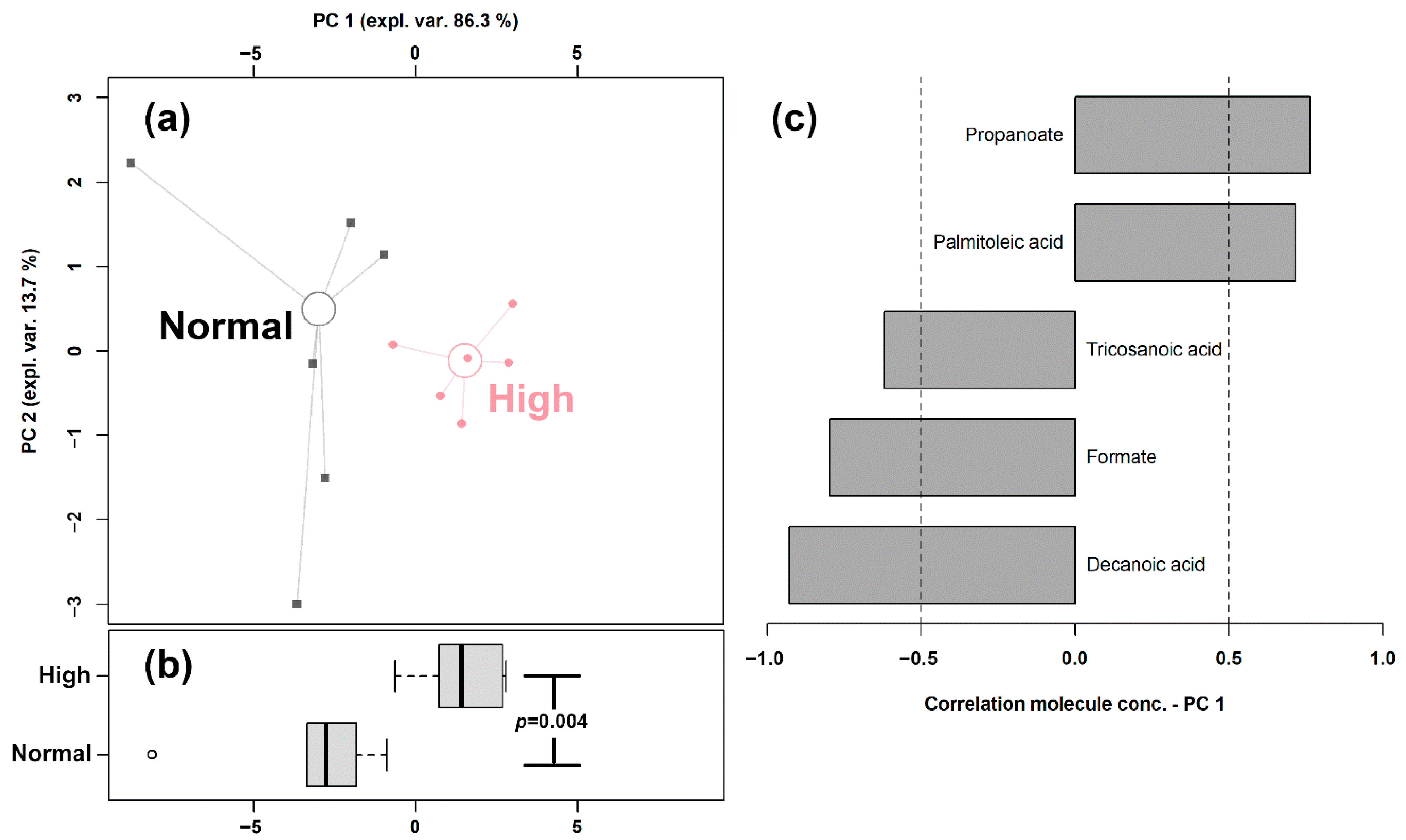

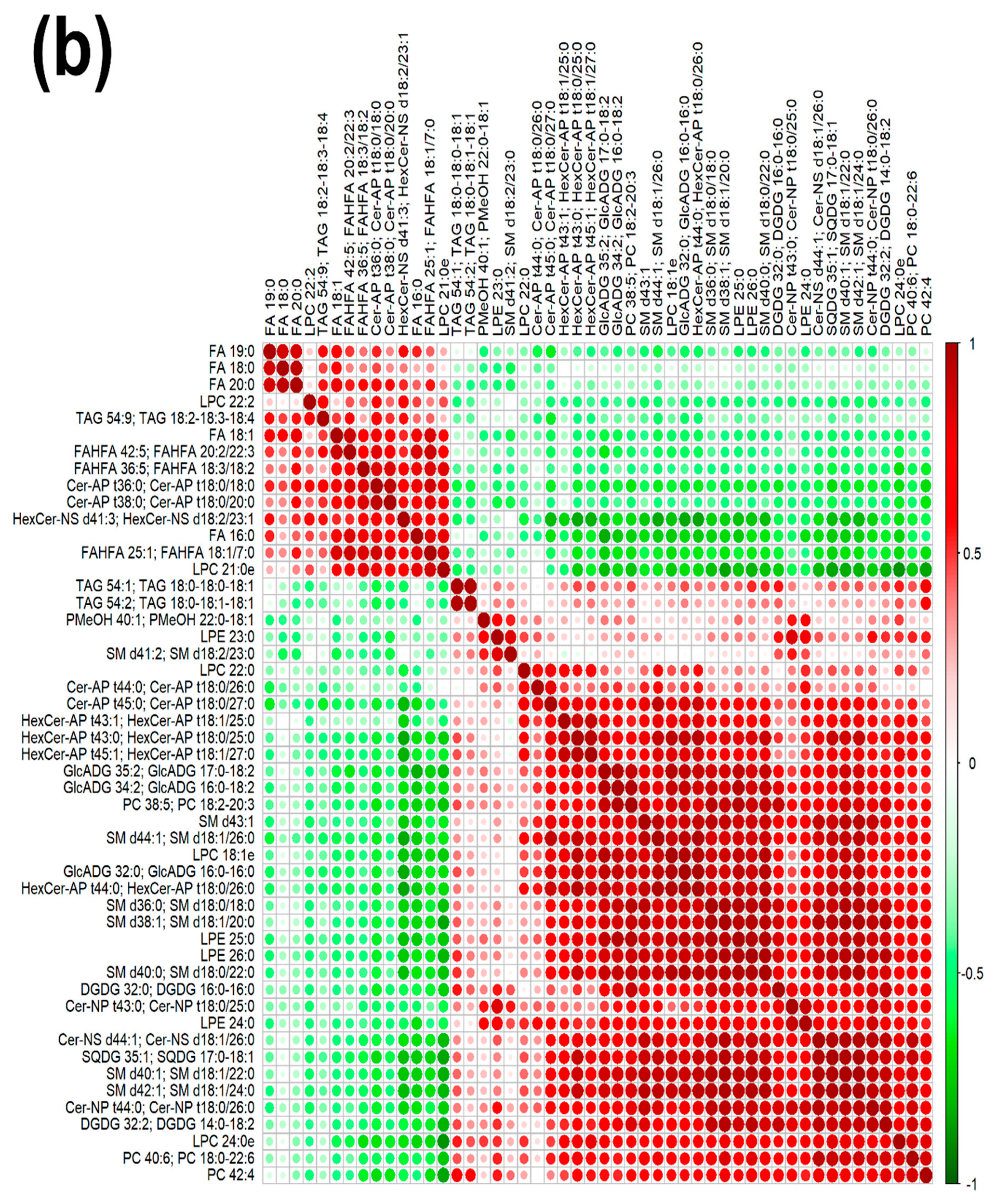
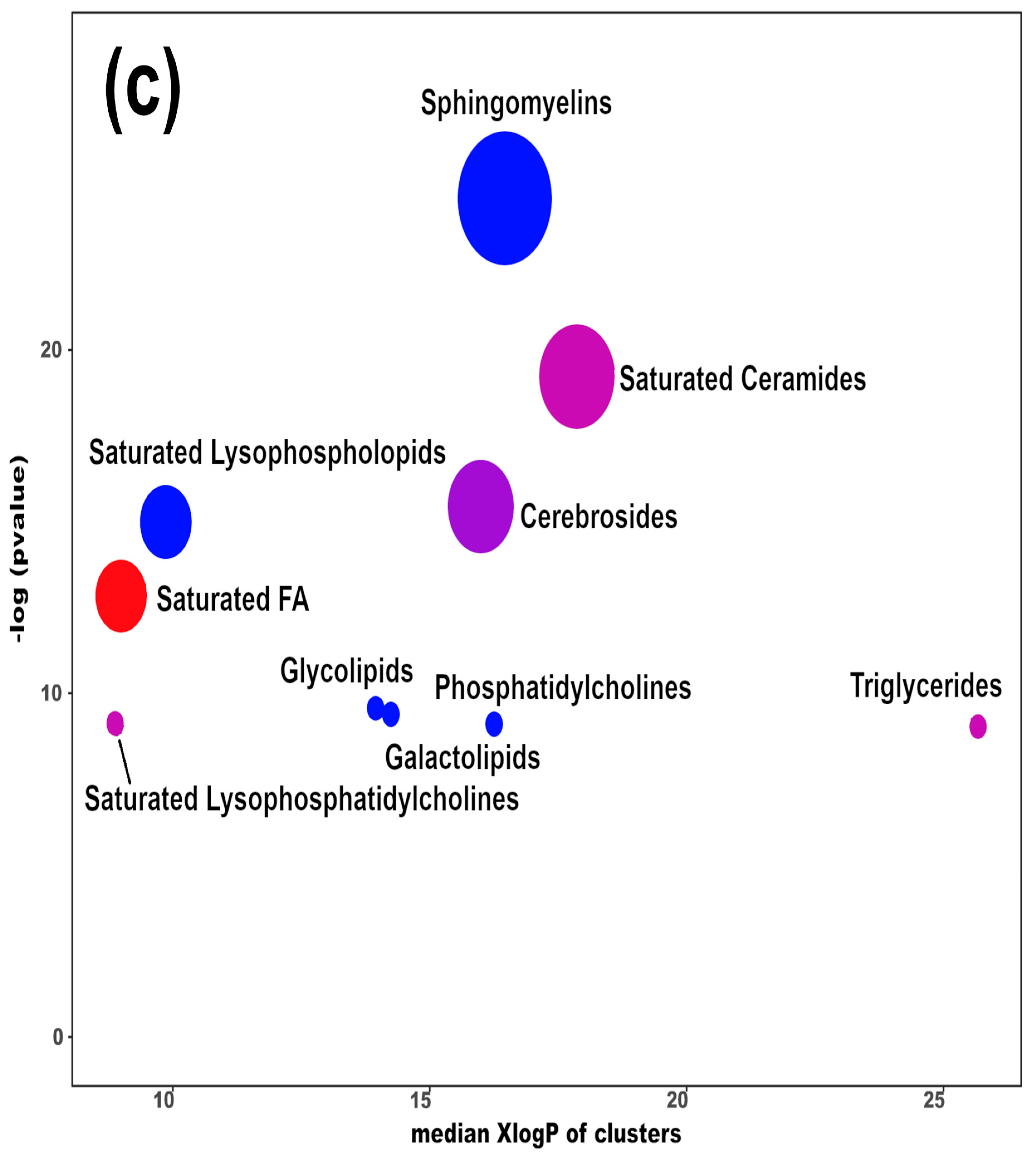
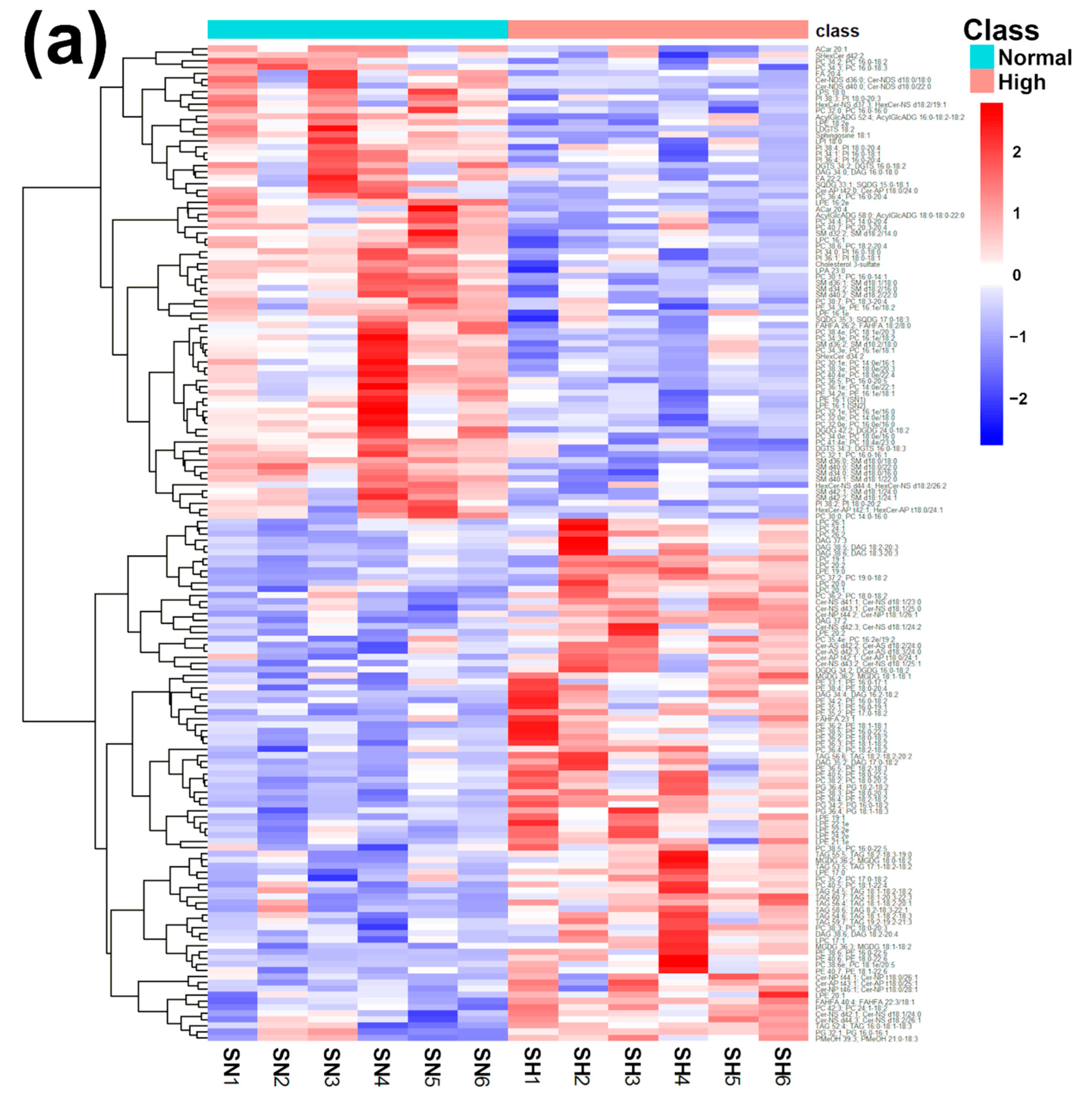
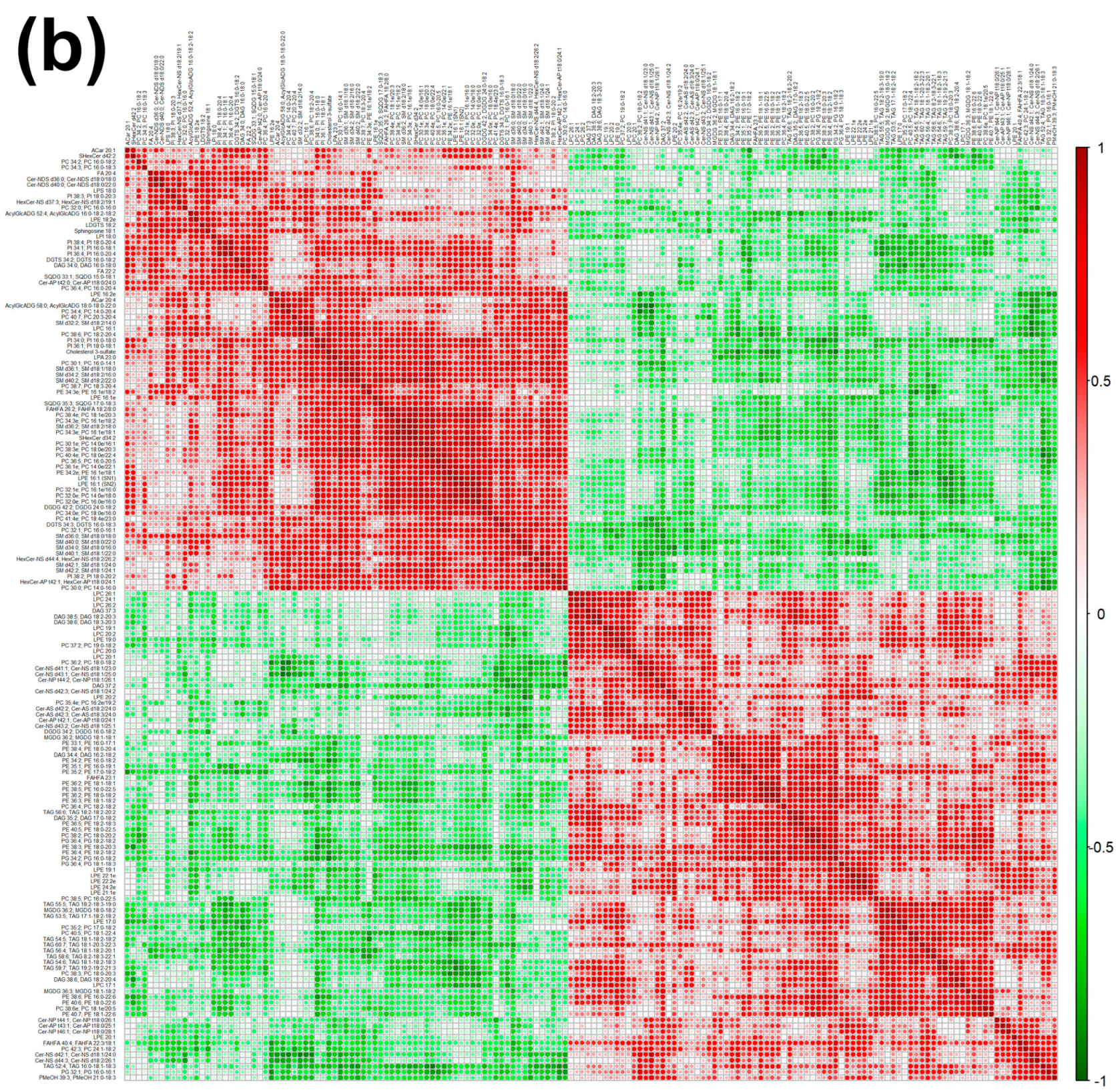
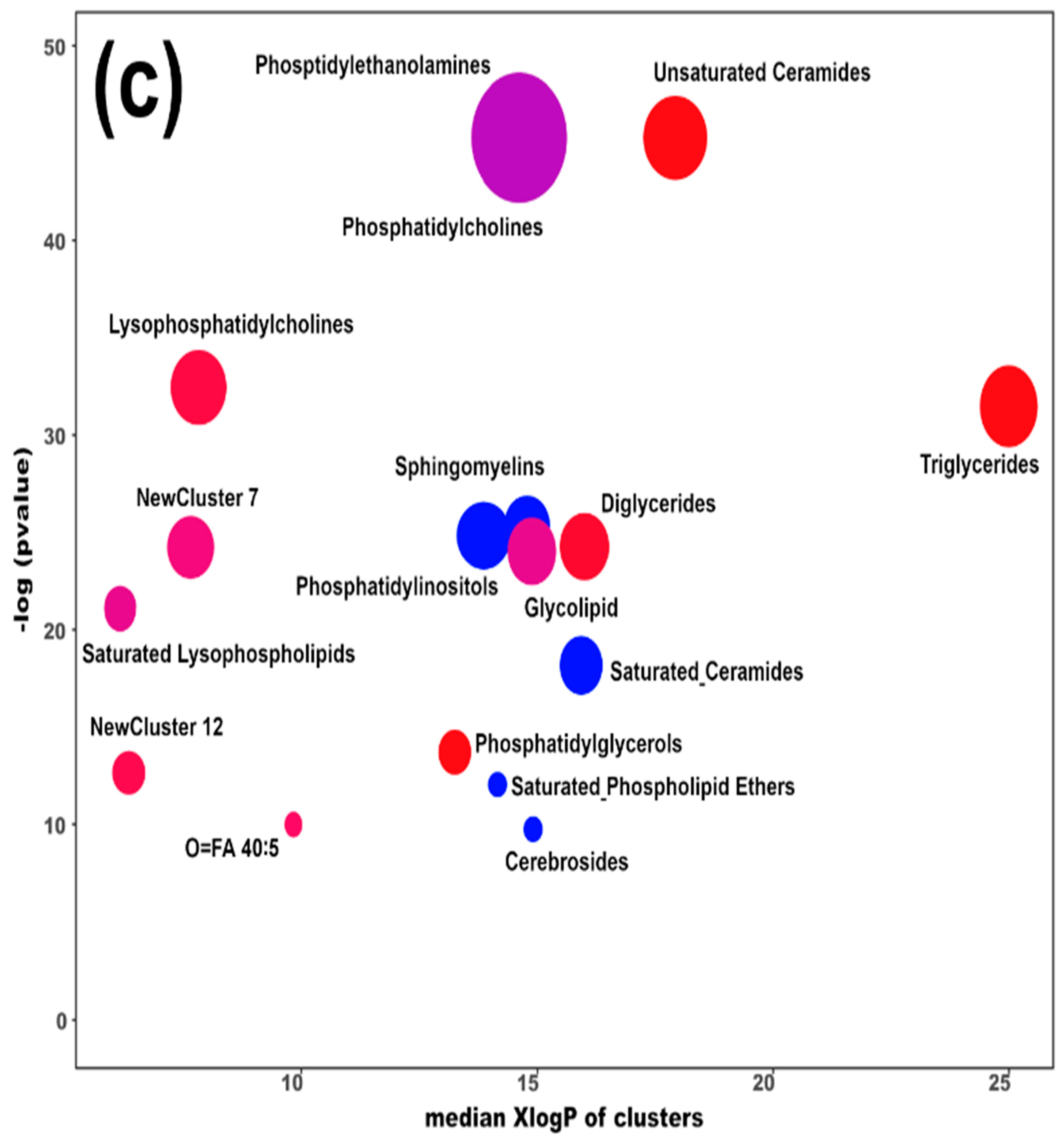
| Stem | Shoot | Leaf | |
|---|---|---|---|
| Isobutyrate | 1.17 ± 0.39 b,* | 1.71 ± 0.63 a,b | 2.06 ± 1.03 a |
| 2-Methylbutyate | 1.12 ± 0.40 b | 2.54 ± 0.48 a | 1.42 ± 0.67 b |
| Valerate | 0.39 ± 0.11 b | 0.35 ± 0.20 b | 0.88 ± 0.31 a |
| Hexanoate | 3.16 ± 1.83 b | 3.95 ± 2.46 b | 24.30 ± 15.90 a |
| Octanoic acid | 0.55 ± 0.07 b | 0.97 ± 0.33 a | 0.43 ± 0.18 b |
| Pentadecanoic acid | 4.12 ± 0.77 a | 1.83 ± 0.63 b | 1.77 ± 1.09 b |
| Heptadecanoic acid | 5.18 ± 1.36 a | 3.36 ± 1.18 b | 3.08 ± 1.31 b |
| Tricosanoic acid | 2.88 ± 0.62 a | 2.19 ± 0.52 a,b | 1.97 ± 0.43 b |
| Normal Group | High Group | p-Value | Trend | |
|---|---|---|---|---|
| Formate | 102.00 ± 103.00 | 23.30 ± 15.20 | 0.035 | ↓ |
| Propanoate | 2.45 ± 1.38 | 10.60 ± 5.20 | 0.005 | ↑ |
| Decanoic acid | 1.08 ± 0.52 | 0.48 ± 0.10 | 0.013 | ↓ |
| Palmitoleic acid | 2.52 ± 2.08 | 6.24 ± 2.36 | 0.015 | ↑ |
| Tricosanoic acid | 1.66 ± 0.11 | 1.29 ± 0.35 | 0.047 | ↓ |
Publisher’s Note: MDPI stays neutral with regard to jurisdictional claims in published maps and institutional affiliations. |
© 2022 by the authors. Licensee MDPI, Basel, Switzerland. This article is an open access article distributed under the terms and conditions of the Creative Commons Attribution (CC BY) license (https://creativecommons.org/licenses/by/4.0/).
Share and Cite
Zhu, C.; Pan, X.; Li, G.; Li, C.; Wu, D.; Tang, J.; Huang, Y.; Zou, L.; Laghi, L. Lipidomics for Determining Giant Panda Responses in Serum and Feces Following Exposure to Different Amount of Bamboo Shoot Consumption: A First Step towards Lipidomic Atlas of Bamboo, Giant Panda Serum and Feces by Means of GC-MS and UHPLC-HRMS/MS. Int. J. Mol. Sci. 2022, 23, 11544. https://doi.org/10.3390/ijms231911544
Zhu C, Pan X, Li G, Li C, Wu D, Tang J, Huang Y, Zou L, Laghi L. Lipidomics for Determining Giant Panda Responses in Serum and Feces Following Exposure to Different Amount of Bamboo Shoot Consumption: A First Step towards Lipidomic Atlas of Bamboo, Giant Panda Serum and Feces by Means of GC-MS and UHPLC-HRMS/MS. International Journal of Molecular Sciences. 2022; 23(19):11544. https://doi.org/10.3390/ijms231911544
Chicago/Turabian StyleZhu, Chenglin, Xin Pan, Guo Li, Caiwu Li, Daifu Wu, Junni Tang, Yan Huang, Likou Zou, and Luca Laghi. 2022. "Lipidomics for Determining Giant Panda Responses in Serum and Feces Following Exposure to Different Amount of Bamboo Shoot Consumption: A First Step towards Lipidomic Atlas of Bamboo, Giant Panda Serum and Feces by Means of GC-MS and UHPLC-HRMS/MS" International Journal of Molecular Sciences 23, no. 19: 11544. https://doi.org/10.3390/ijms231911544
APA StyleZhu, C., Pan, X., Li, G., Li, C., Wu, D., Tang, J., Huang, Y., Zou, L., & Laghi, L. (2022). Lipidomics for Determining Giant Panda Responses in Serum and Feces Following Exposure to Different Amount of Bamboo Shoot Consumption: A First Step towards Lipidomic Atlas of Bamboo, Giant Panda Serum and Feces by Means of GC-MS and UHPLC-HRMS/MS. International Journal of Molecular Sciences, 23(19), 11544. https://doi.org/10.3390/ijms231911544






